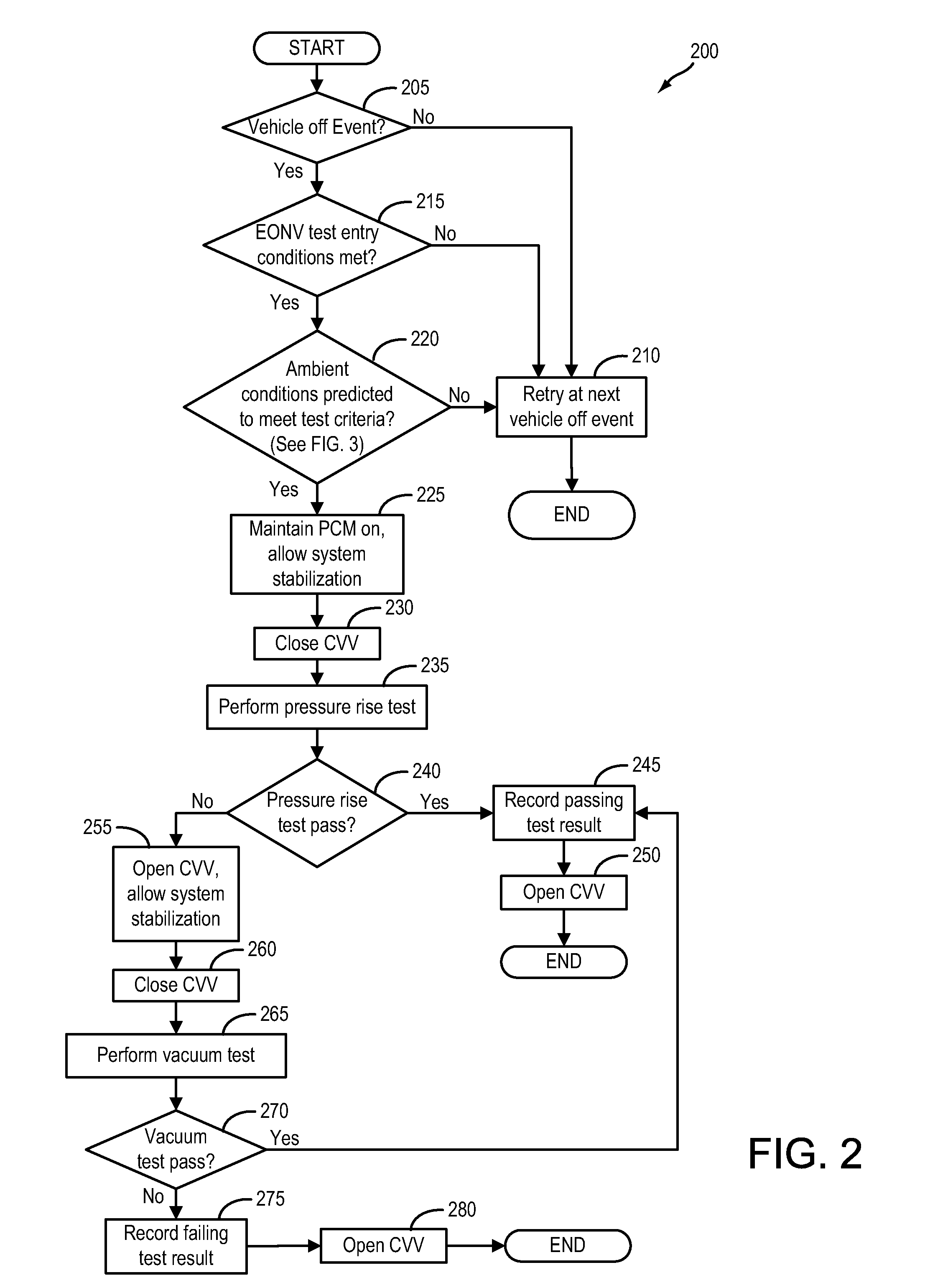Evaporative emissions testing based on historical and forecast weather data
a technology of evaporative emissions and weather data, applied in the direction of fluid tightness measurement, instruments, machines/engines, etc., can solve the problems of skewing the pressure/vacuum buildup in the sealed fuel system, limiting the rate of pressure or vacuum development, and prone to false failure of eonv leak test, etc., to achieve the effect of reducing the number of aborted tests, increasing the overall performance metrics of the test, and maintaining or improving the overall execution rate of tes
- Summary
- Abstract
- Description
- Claims
- Application Information
AI Technical Summary
Benefits of technology
Problems solved by technology
Method used
Image
Examples
Embodiment Construction
[0013]This detailed description relates to systems and methods for performing an engine-off natural vacuum (EONV) leak test for a vehicle fuel system. In particular, the description relates to systems and methods for scheduling and / or validating an EONV test based on weather data retrieved from an off-board computing system. The EONV test may be applied to a hybrid vehicle system comprising a fuel system and an evaporative emissions system, as depicted in FIG. 1. FIG. 2 depicts a method for scheduling an EONV test based on predicted weather patterns. The predicted weather patterns may be derived from data retrieved from an off-board computing system and processed at the vehicle controller, as depicted in FIG. 3. Additionally or alternatively, an EONV test may be validated following completion of the test by analyzing the EONV test results in the context of weather recorded during the test, as depicted in FIG. 4.
[0014]FIG. 1 shows a schematic depiction of a hybrid vehicle system 6 th...
PUM
 Login to View More
Login to View More Abstract
Description
Claims
Application Information
 Login to View More
Login to View More - R&D
- Intellectual Property
- Life Sciences
- Materials
- Tech Scout
- Unparalleled Data Quality
- Higher Quality Content
- 60% Fewer Hallucinations
Browse by: Latest US Patents, China's latest patents, Technical Efficacy Thesaurus, Application Domain, Technology Topic, Popular Technical Reports.
© 2025 PatSnap. All rights reserved.Legal|Privacy policy|Modern Slavery Act Transparency Statement|Sitemap|About US| Contact US: help@patsnap.com



